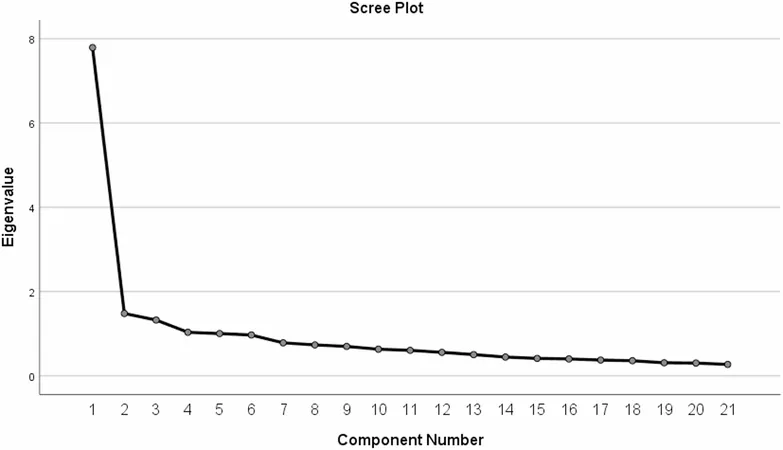
Unlocking Creativity: How Art is Revolutionizing Medical Education
2025-08-30
Author: Ming
Integrating Art into Medical Training
The goal of modern medical education isn't just to produce skilled professionals; it's to foster socially responsible individuals equipped for sustainable development. This multifaceted approach intertwines knowledge, skills, attitudes, and creativity, all crucial for effective healthcare. Recent research highlights that integrating arts into medical training significantly enhances students' critical thinking and creativity.
The Impact of Art on Learning Outcomes
Engaging in artistic activities has been shown to lead to improved academic achievements and increased creative capacities among students. Medical schools worldwide are beginning to recognize the value of this integration, and many are weaving arts into their curricula to not only enhance educational experiences but also to cultivate essential competencies.
Developing the Art Education in Medical Education Questionnaire (AEMEQ)
A critical aspect of this educational transformation is the validation of effective assessment tools. The study focuses on validating a new questionnaire designed to evaluate art-based education in medical curricula through meticulous feedback from both expert faculty and medical students. This validation is essential in ensuring that the programs offered meet educational standards.
Methodology: A Comprehensive Approach to Survey Validation
A detailed literature review identified key dimensions necessary for integrating art into medicine, leading to the creation of the AEMEQ, which includes 53 items rated on a five-point Likert scale. By employing expert opinions and conducting cognitive interviews, researchers aimed to refine this tool and ensure its relevance and accuracy.
Engaging Medical Students for Feedback
The study encompassed 552 medical students from Birjand University of Medical Sciences, underscoring the importance of gathering insights directly from the future medical professionals who will utilize these tools. Participants represented various stages of their education, ensuring diverse perspectives were considered.
Ensuring Validity: Face and Content Assessment
To gauge validity, both face and content validity measures were applied. The feedback from 20 experts in arts and medical education helped ensure that the questionnaire covered all necessary domains thoroughly, leading to a final selection of 23 well-structured questions.
From Theory to Practice: Explaining the Questionnaire's Framework
The AEMEQ is organized into five dimensions including curriculum goals and teaching strategies, reflecting a robust framework that enhances the learning environment. Through a thorough process involving item analysis and reliability testing with methods like Cronbach’s alpha, the questionnaire demonstrated strong internal consistency across various components.
Results: A Step Towards Improved Medical Education
The final validation showed that the AEMEQ effectively captures the integration of humanities within medical education, as evidenced by favorable psychometric properties and positive expert feedback, paving the way for enhanced curriculum development.
Implications for Future Education and Research
The findings suggest vital educational implications, promoting empathy, creativity, and a humanistic approach in future physicians. This validates the interdisciplinary role of art in medicine and its potential to boost educational quality significantly. Moving forward, the AEMEQ could serve as a pivotal tool for evaluating and refining curricula, ensuring they meet the evolving needs of the medical field.
Conclusion: The Path Ahead for Medical Education
As the study highlights the integral role of art in medical education, future research should aim to expand the questionnaire's application across various cultural contexts. With ongoing validation and enhancement of tools like the AEMEQ, the blending of arts and sciences in medical training promises a brighter, more holistic future for healthcare education.

 Brasil (PT)
Brasil (PT)
 Canada (EN)
Canada (EN)
 Chile (ES)
Chile (ES)
 Česko (CS)
Česko (CS)
 대한민국 (KO)
대한민국 (KO)
 España (ES)
España (ES)
 France (FR)
France (FR)
 Hong Kong (EN)
Hong Kong (EN)
 Italia (IT)
Italia (IT)
 日本 (JA)
日本 (JA)
 Magyarország (HU)
Magyarország (HU)
 Norge (NO)
Norge (NO)
 Polska (PL)
Polska (PL)
 Schweiz (DE)
Schweiz (DE)
 Singapore (EN)
Singapore (EN)
 Sverige (SV)
Sverige (SV)
 Suomi (FI)
Suomi (FI)
 Türkiye (TR)
Türkiye (TR)
 الإمارات العربية المتحدة (AR)
الإمارات العربية المتحدة (AR)